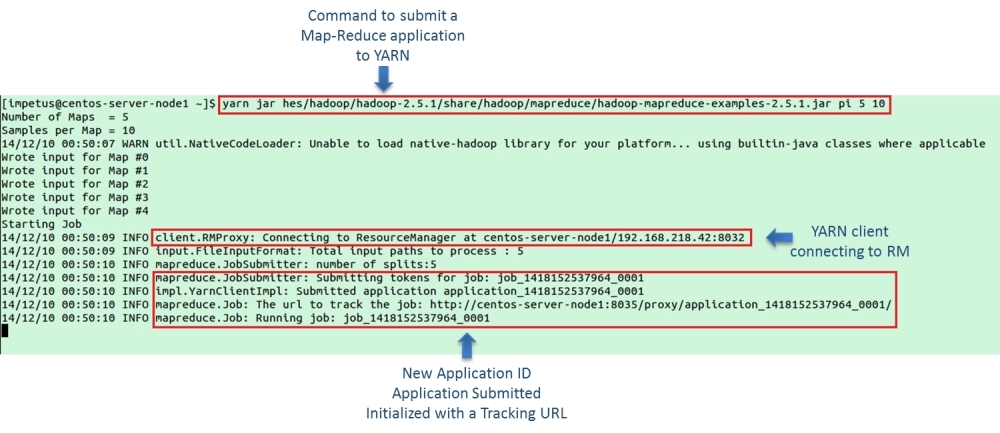When a MapReduce application is submitted to a Hadoop-YARN cluster, a series of events occurs in different components. In this section, we will submit a sample Hadoop-YARN application to a cluster. We will discuss the application flow with the help of snapshots and understand how the series of events occurs.
As discussed in Chapter 3, Administering a Hadoop-YARN Cluster, the yarn jar command is used to submit a MapReduce application to a Hadoop-YARN cluster. An example jar is packaged inside the Hadoop bundle. It contains sample MapReduce programs, such as word count, pi estimator, pattern search, and so on. This is shown in the following figure:

As shown in the preceding diagram, we have submitted a pi job with 5 and 10 as sample arguments. The first argument 5 denotes the number of map tasks and the second argument 10 represents the samples per map as parameters to the job.
yarn jar <jarPath> <JobName...


